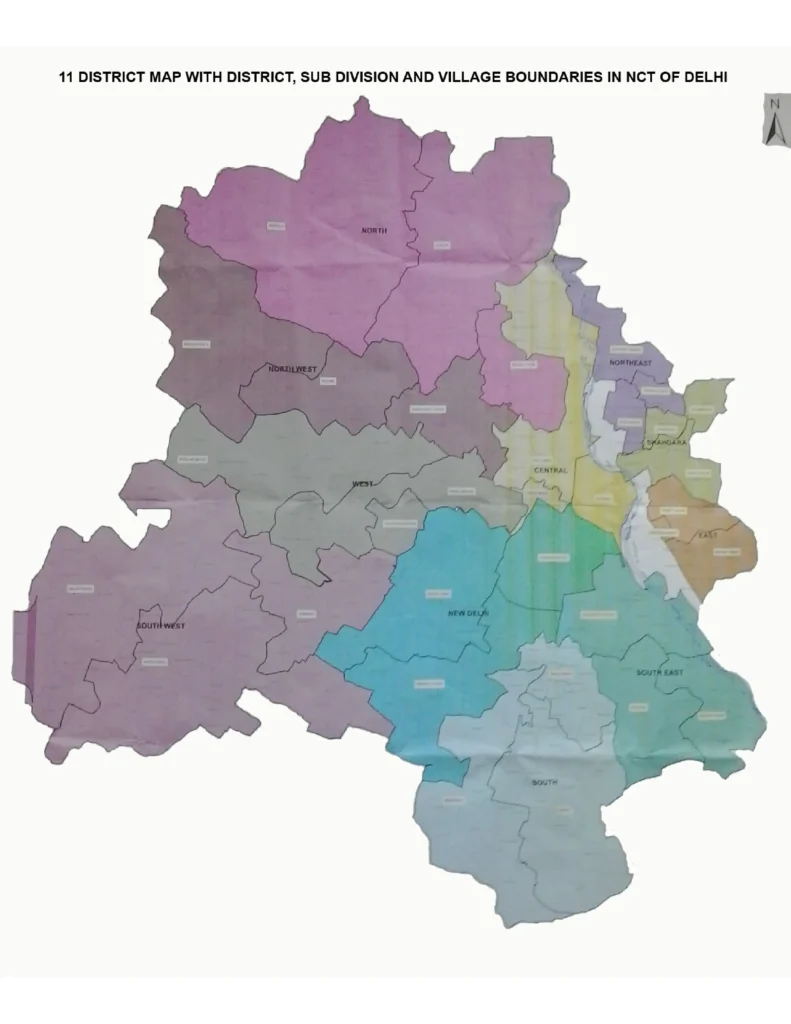New Delhi: Delhi’s administrative framework may soon undergo a major overhaul, with the central government proposing to unify the MCD Boundaries of the city’s revenue districts and Municipal Corporation of Delhi (MCD) zones. The move is aimed at eliminating jurisdictional confusion, streamlining service delivery, and improving administrative efficiency.

Currently, the capital is divided into 11 revenue districts and 12 MCD zones, along with the New Delhi Municipal Council (NDMC) and Delhi Cantonment Board. Due to misalignment, several zones overlap with multiple districts, complicating governance and delaying public service access.
Under the proposed reforms, the government is considering establishing an equal number of revenue districts and MCD zones with co-terminus boundaries. This includes integrating NDMC and Delhi Cantt into the New Delhi district to simplify coordination.
To make services more accessible, each district will feature a mini-secretariat—a centralized complex housing departments such as health, education, public works, social welfare, transport, and irrigation. Citizens would be able to access multiple services from a single location, reducing the need to navigate between various offices.
In addition, officials are planning unified office complexes where all district-level department officers report directly to District Magistrates (DMs), strengthening accountability and inter-departmental coordination.
Licensing procedures will also be overhauled, with the creation of a single-window digital platform to streamline permissions, reduce delays, eliminate redundancies, and curb revenue losses due to procedural inefficiencies.
By aligning administrative units and centralizing public services, the restructuring aims to promote ease of living, improve service delivery, and enhance the overall governance experience for Delhi’s residents.
Impact on Urban Planning:
Beyond governance, the unification of administrative boundaries is expected to significantly boost city planning and infrastructure development. With clearly defined and consistent jurisdictions:
- Planning authorities will face fewer coordination issues, leading to faster implementation of development projects.
- Land-use planning, infrastructure upgrades, and service distribution (such as water, electricity, and sanitation) can be better aligned with demographic realities.
- Data consistency across departments will improve evidence-based policymaking and spatial planning.
- The unified structure will enable better zoning regulations, transportation planning, and disaster management at the district level.
- Multi-agency projects—such as transit corridors, housing schemes, or flood-control measures—will benefit from seamless collaboration across departments working within the same boundaries.
Overall, this administrative rationalization is not only expected to improve service delivery, but also lay the foundation for a more resilient, inclusive, and efficiently planned Delhi.
Also Read: DDA Starts Bhalswa Lake Conservation Drive with RCC Wall Tender in North-West Delhi
